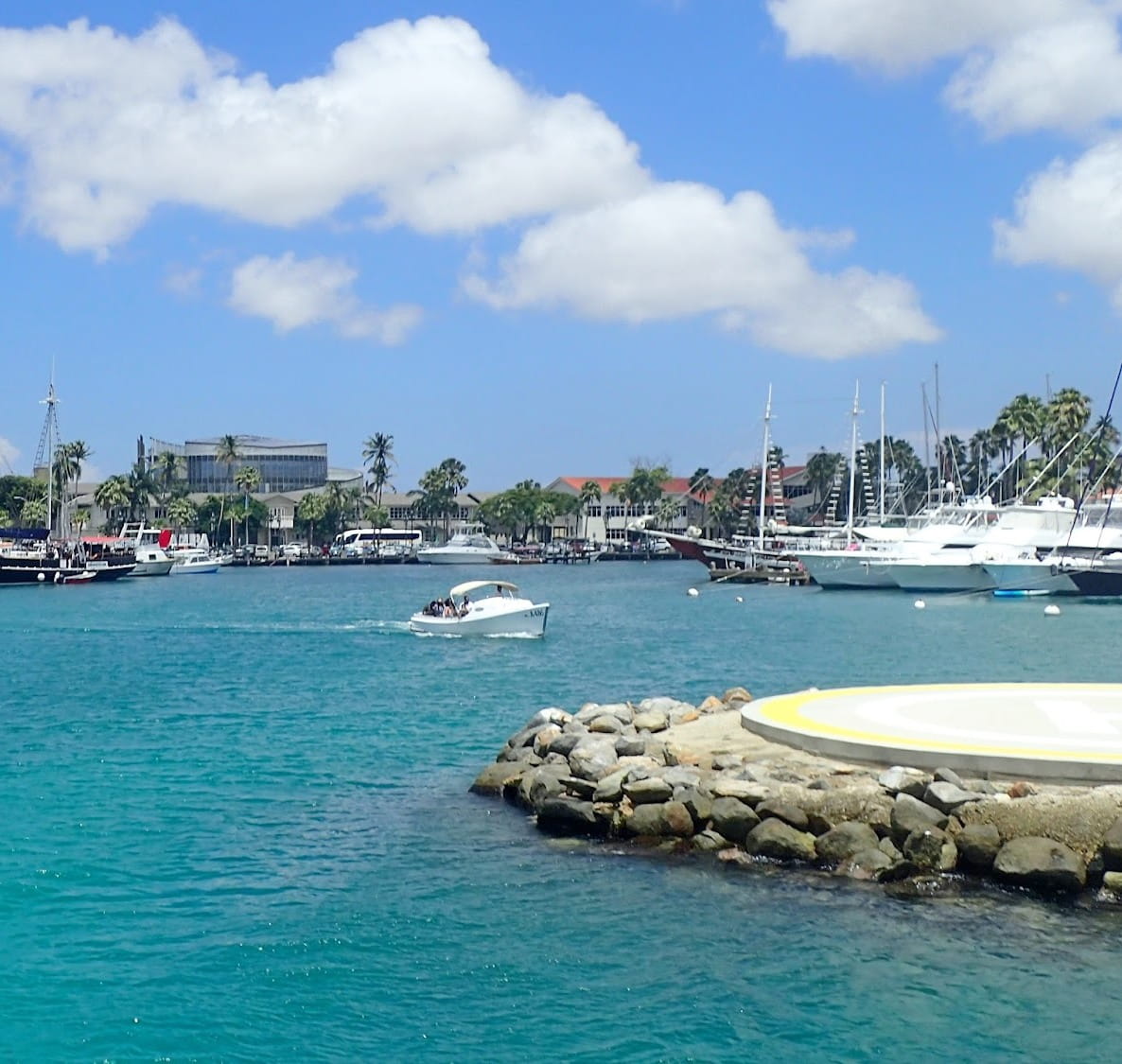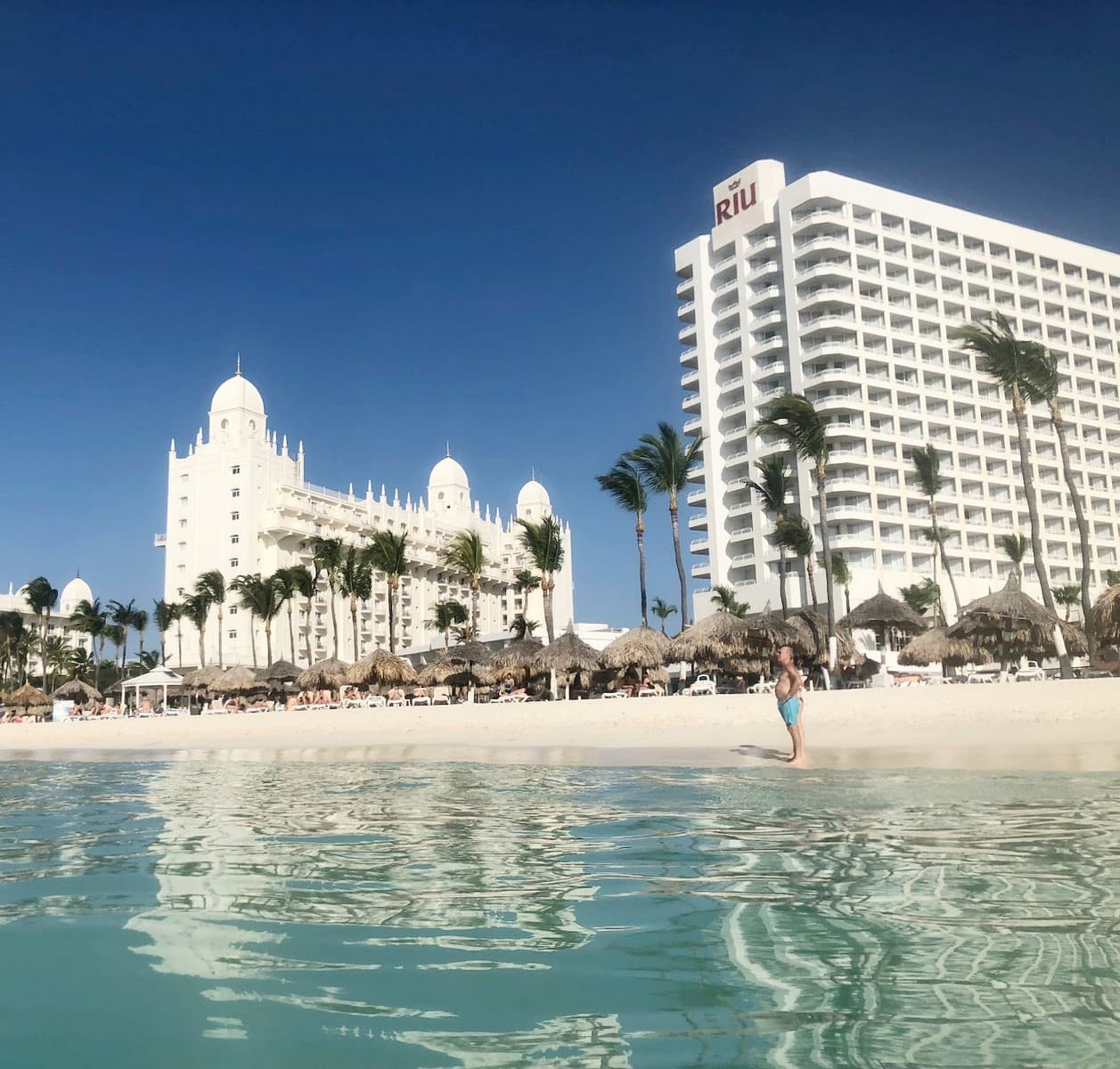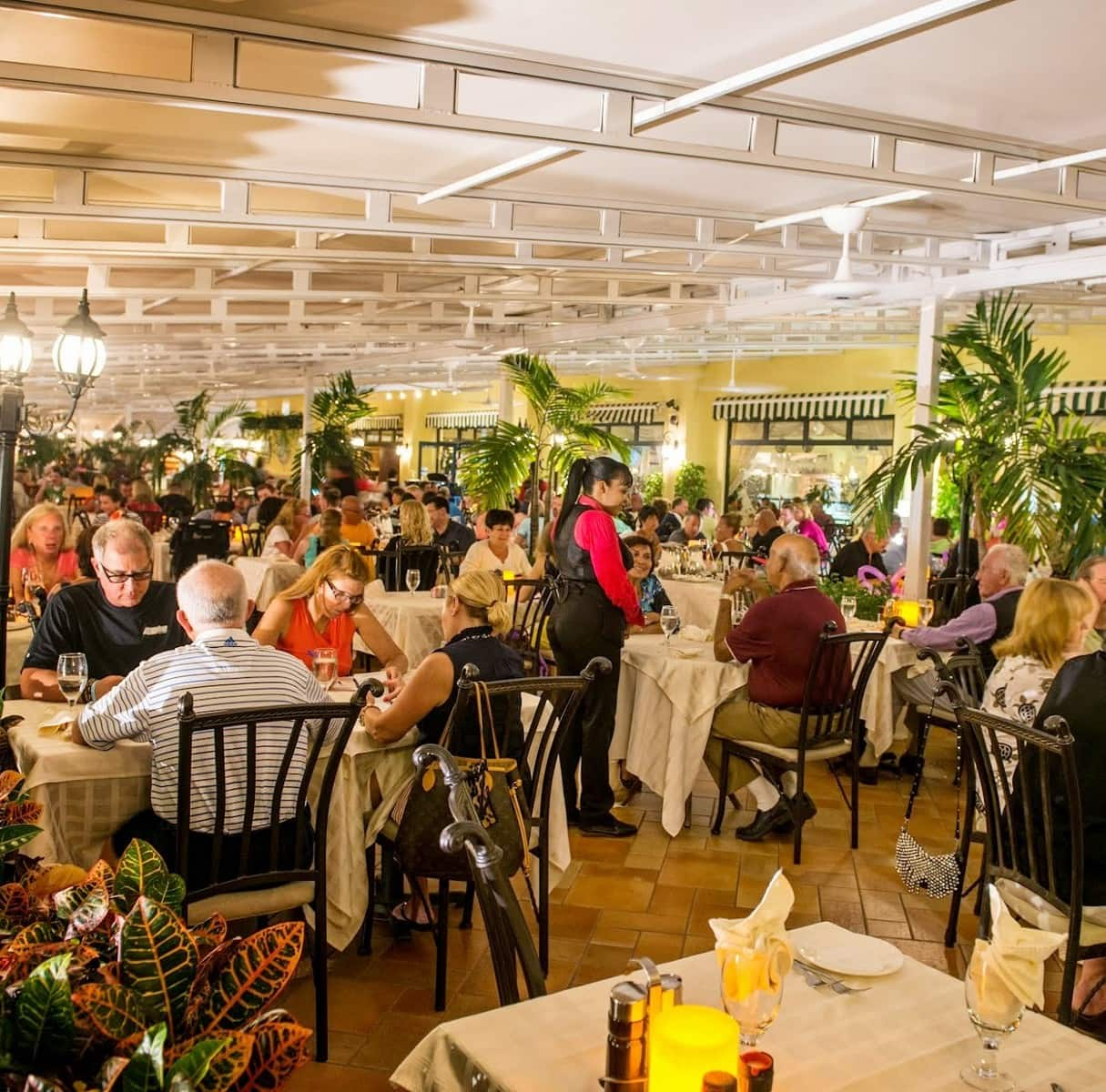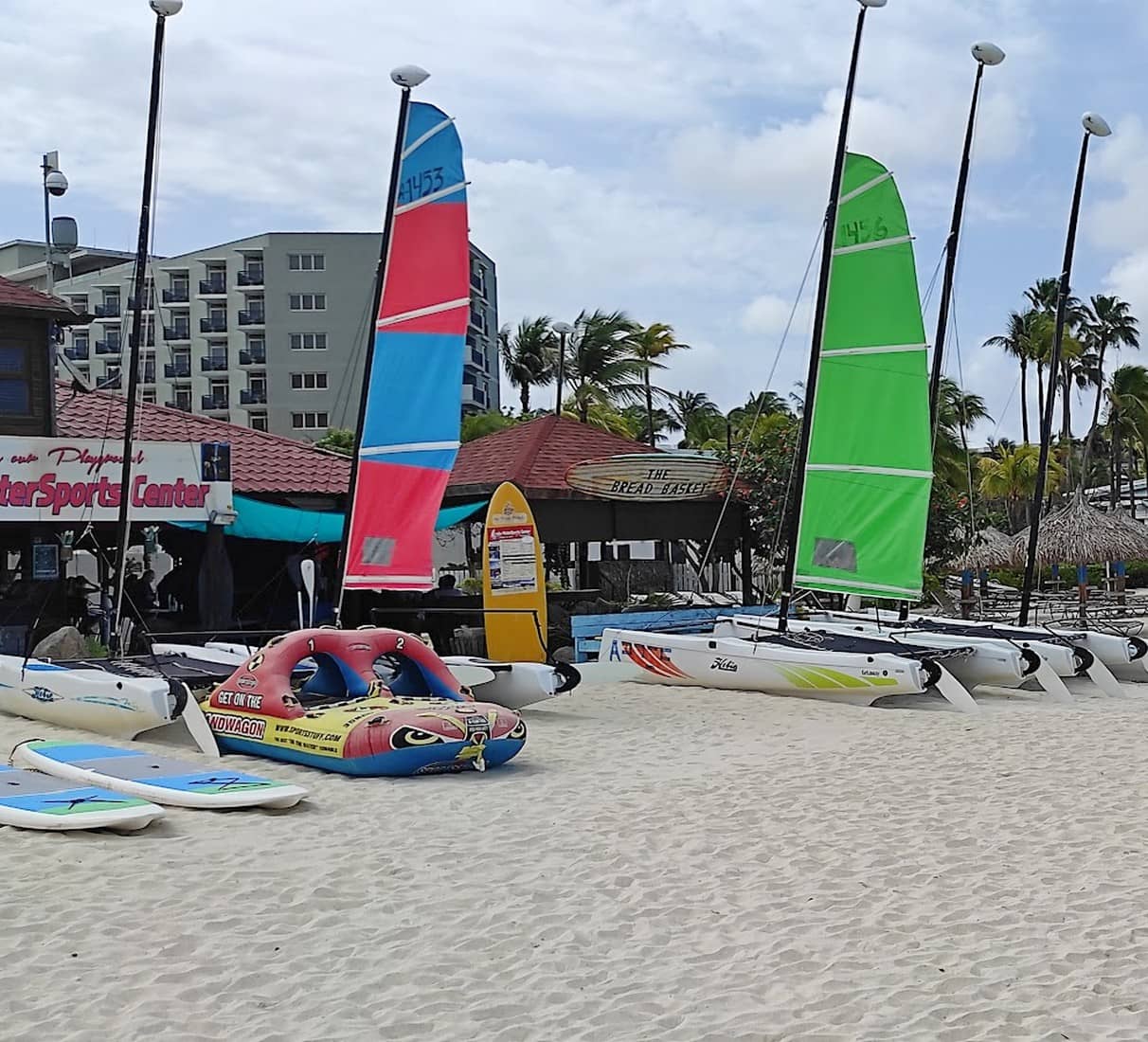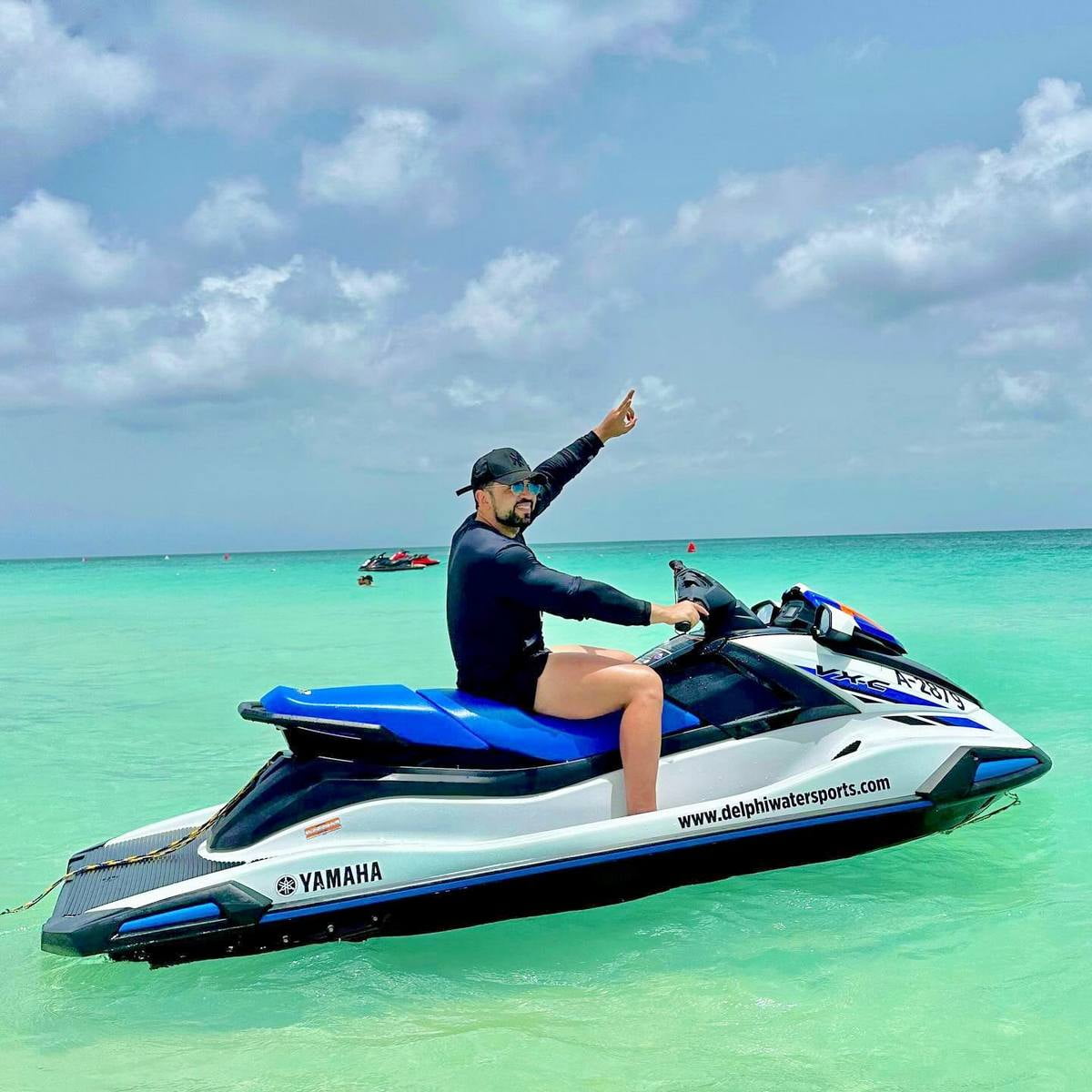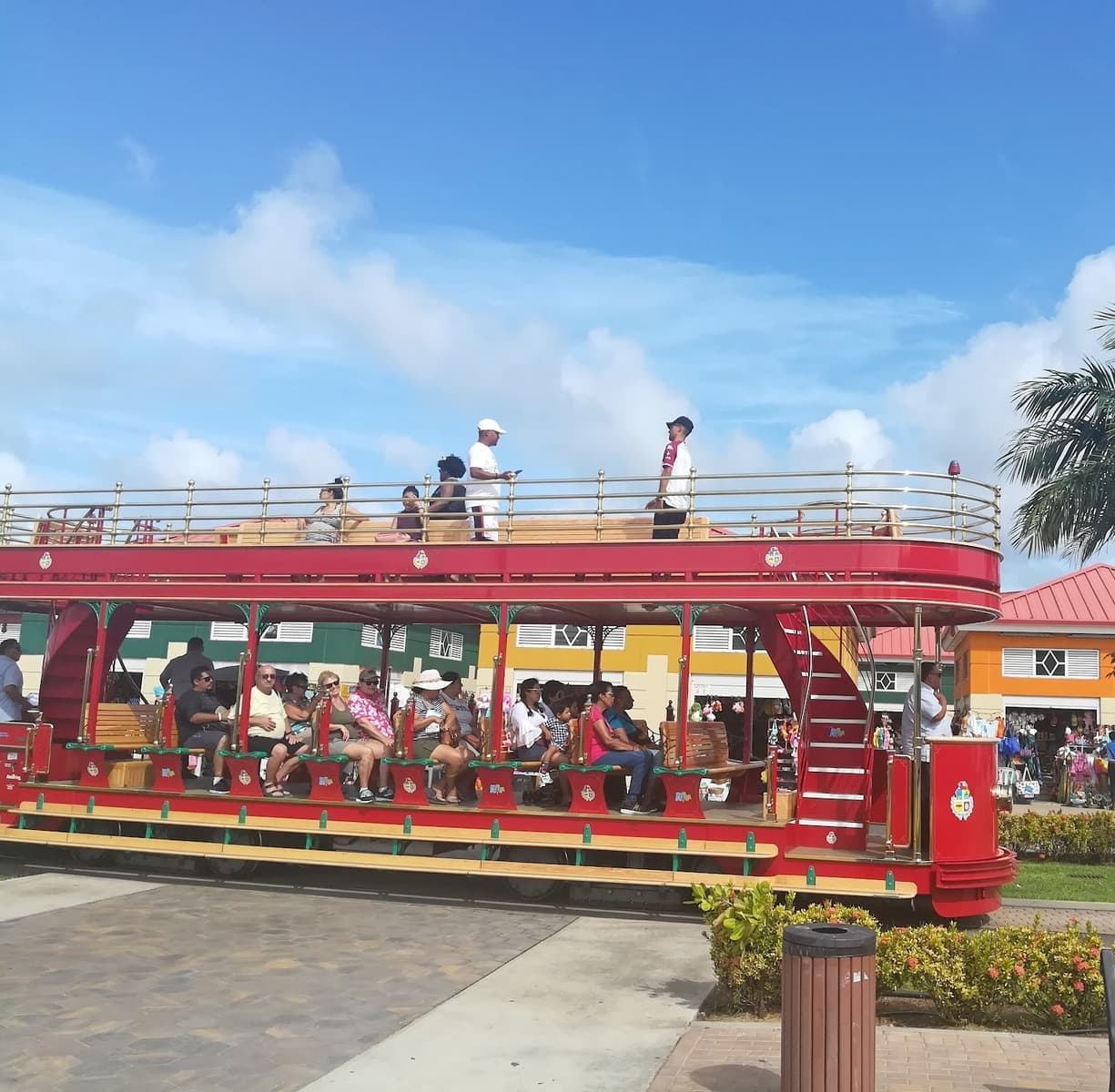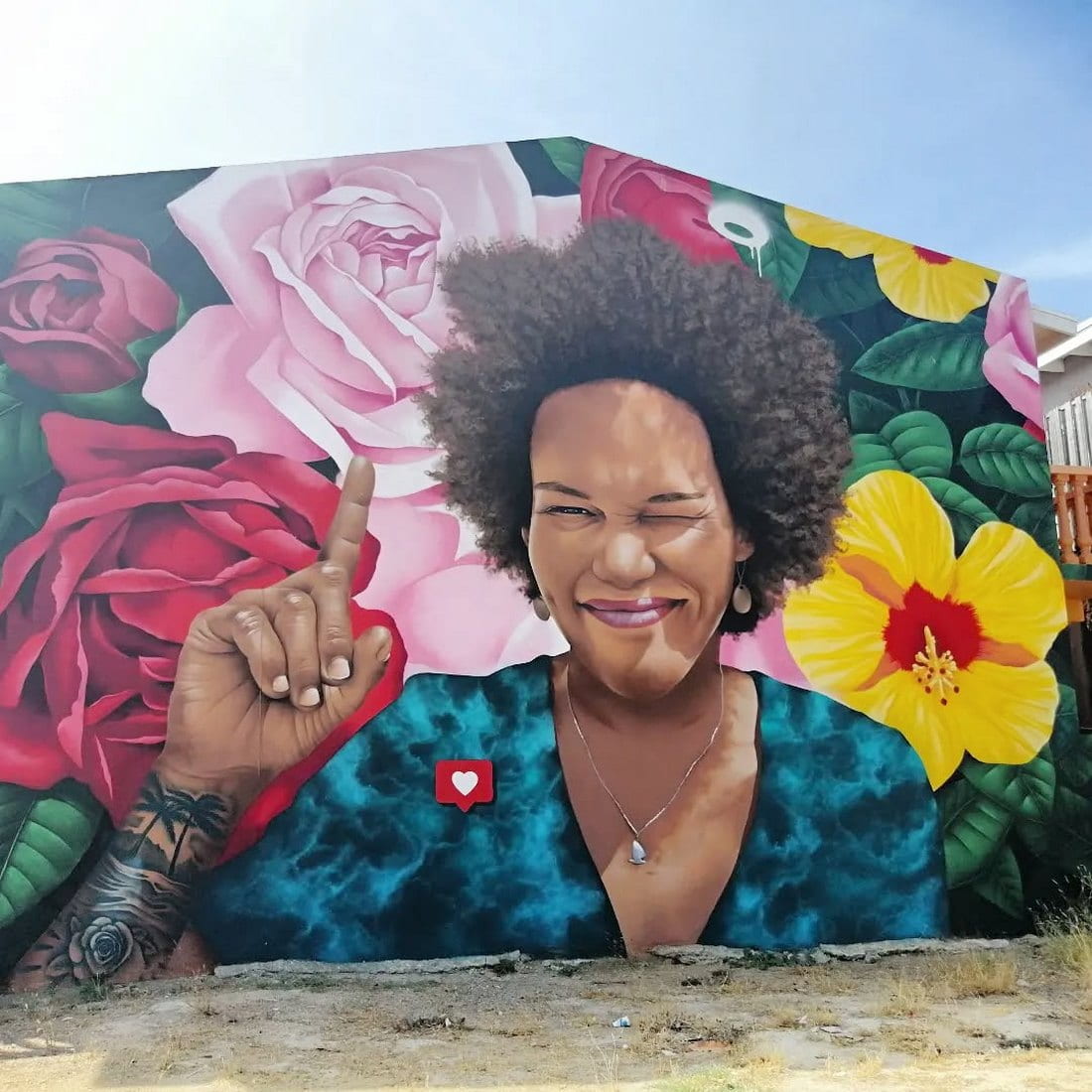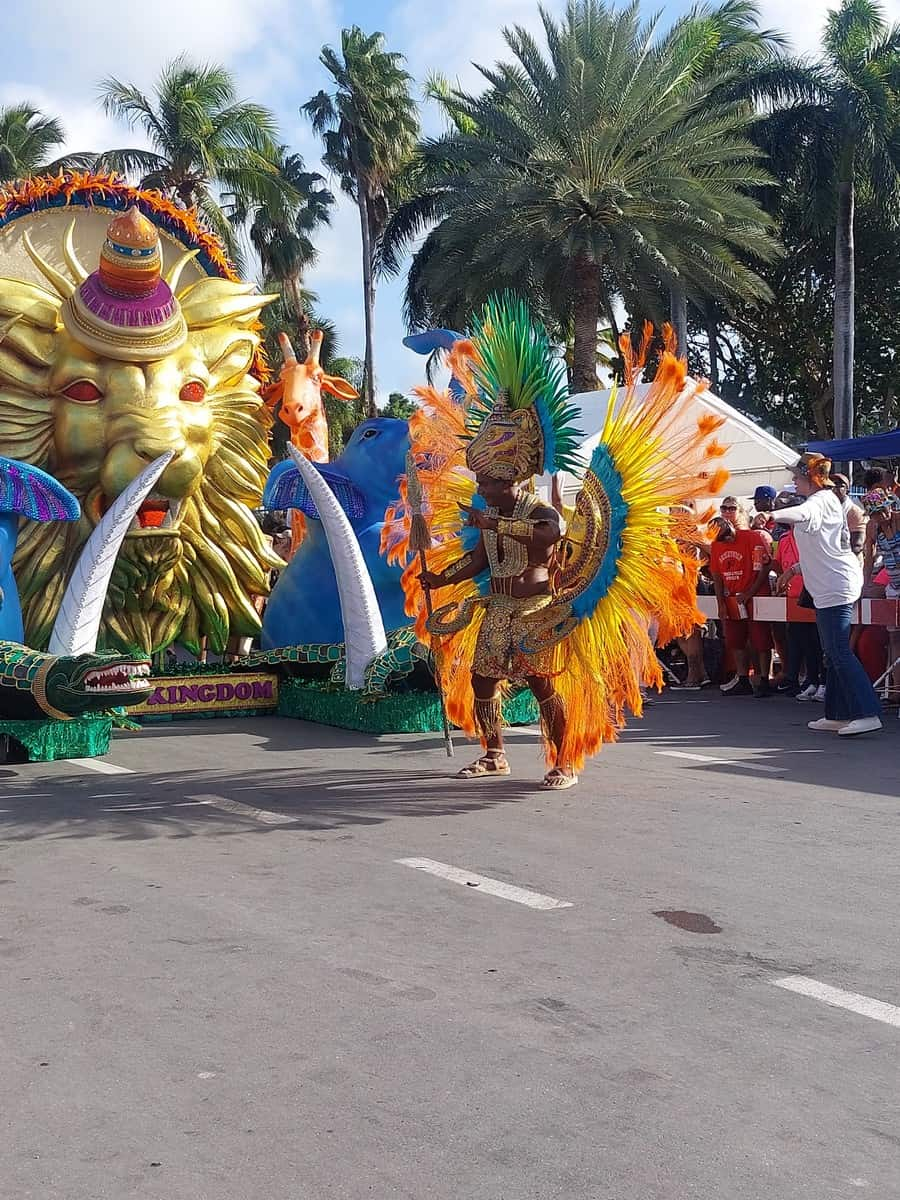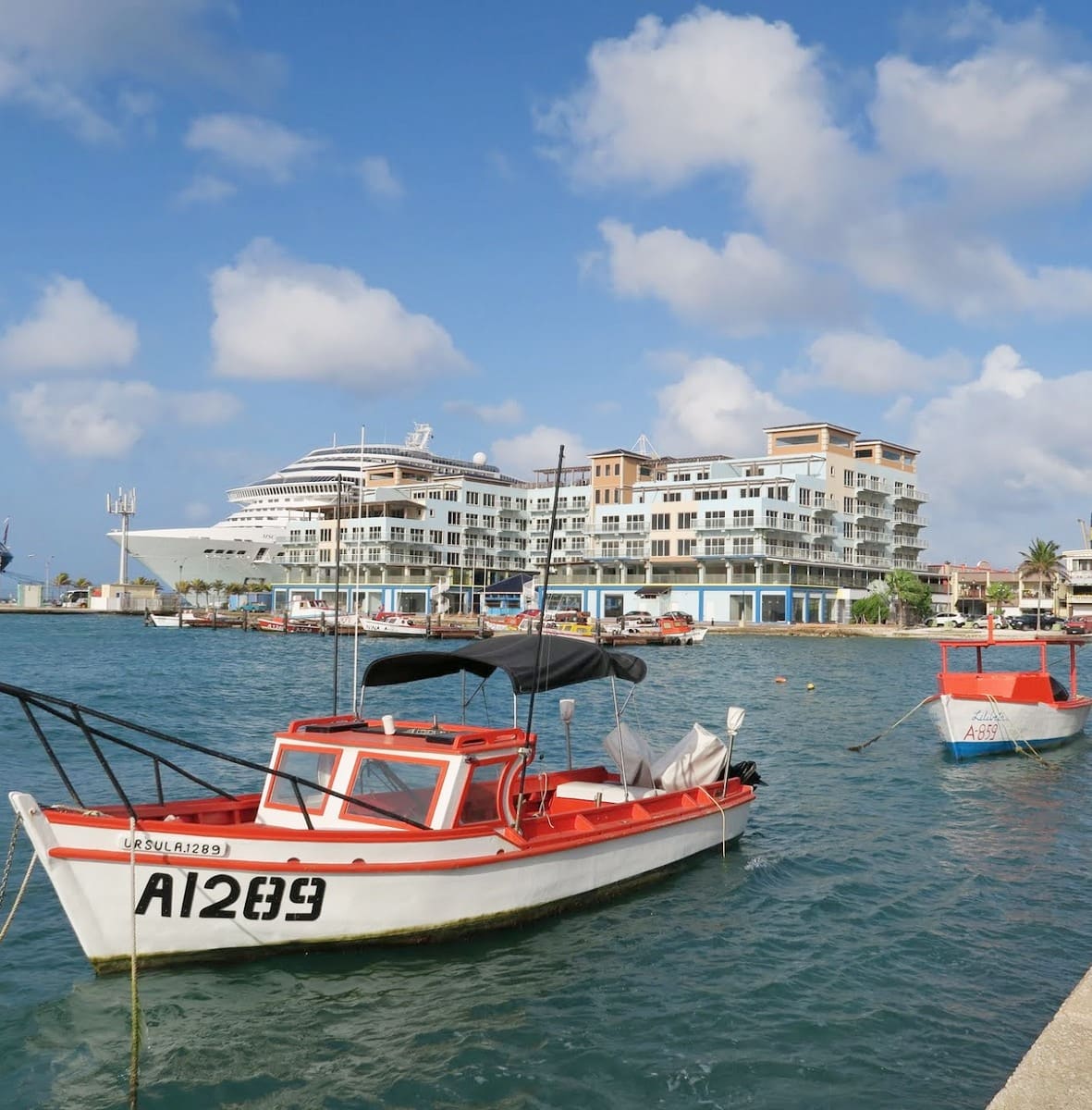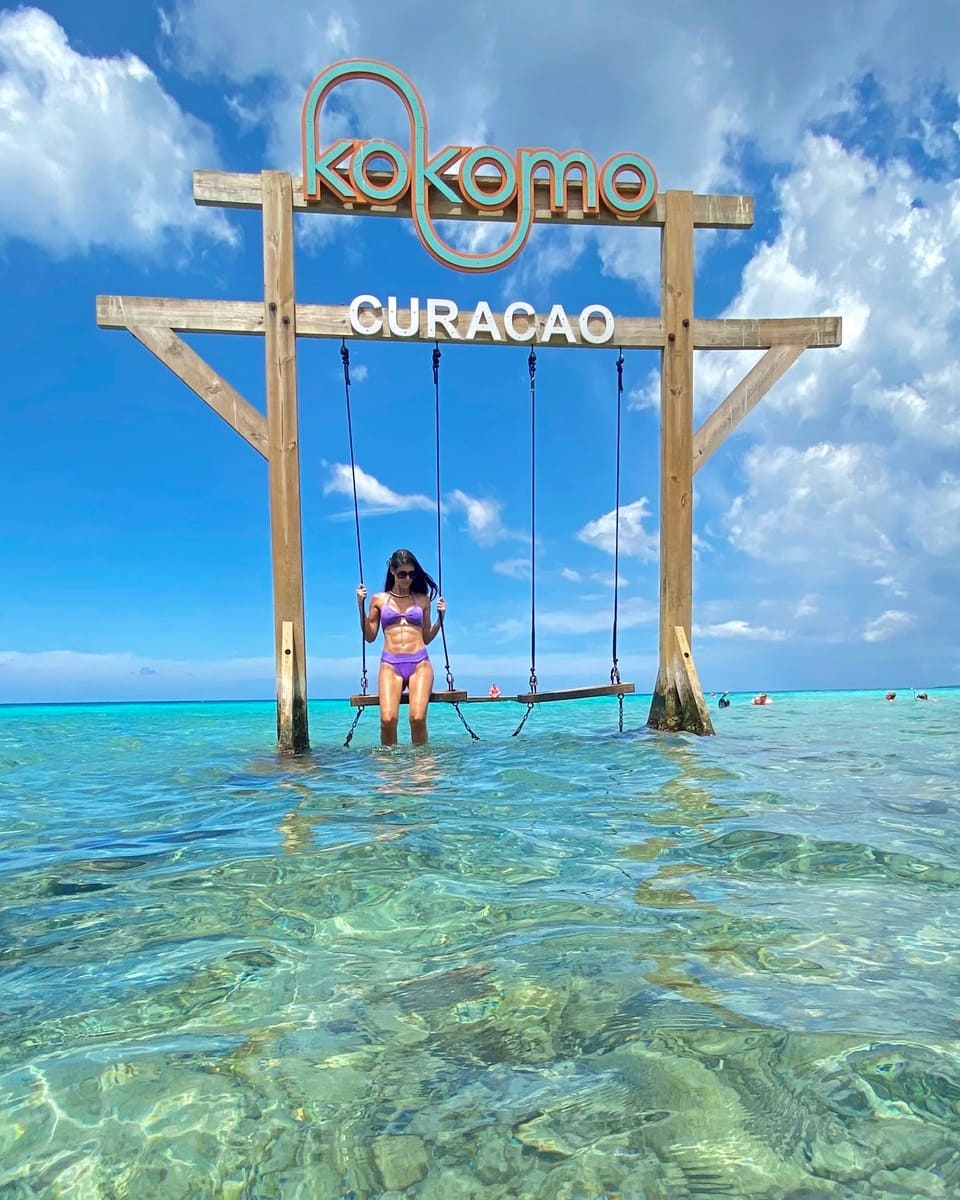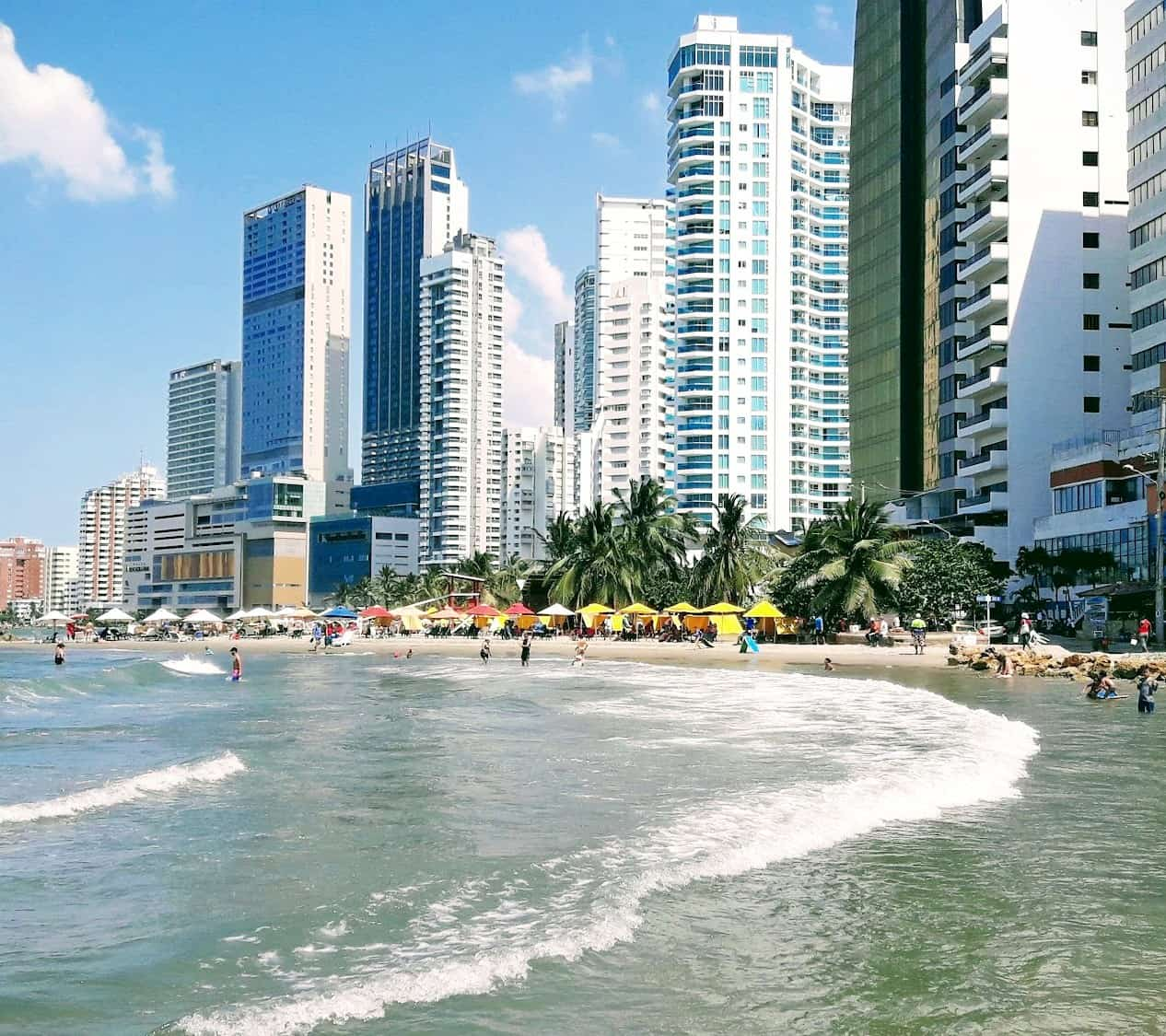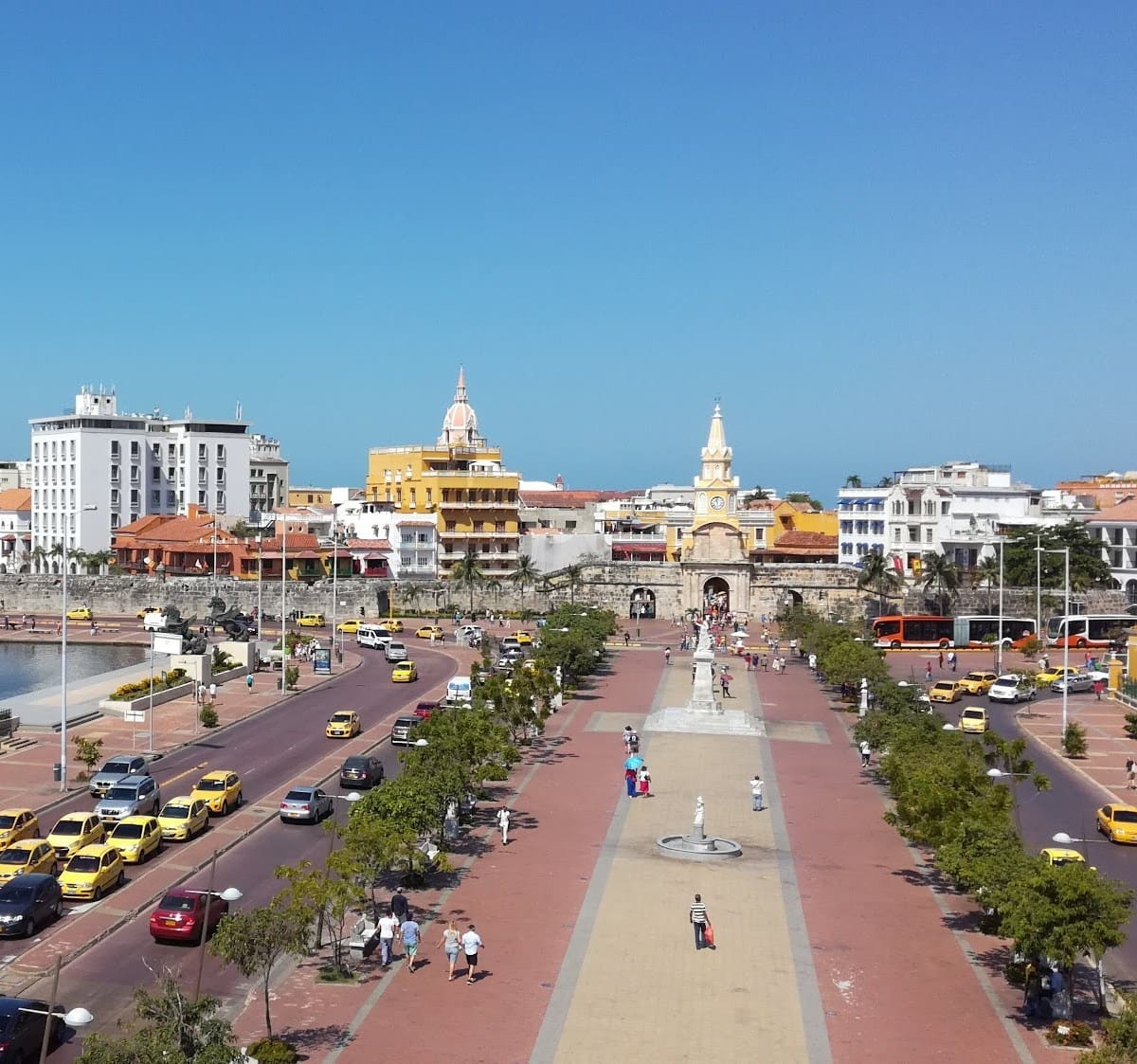Are you dreaming of white sandy beaches, crystal-clear waters, and endless sunshine? If you’re looking for the perfect Caribbean getaway, Aruba might just be your ideal destination. Located just 15 miles off the coast of Venezuela, this southern Caribbean gem boasts a sunny climate and pleasant weather year-round. Unlike many of its neighbors, Aruba sits outside of the hurricane belt, making it a safe bet for travelers worried about tropical storms.
🏡 Where to Stay in Aruba
- 💎 Luxury Hotel: Bucuti & Tara Boutique Beach Resort - Adults Only
- ✨ 5-Star: The Ritz-Carlton, Aruba
- 🏨 4-Star: Manchebo Beach Resort and Spa
- 🛏️ 3-Star: MVC Eagle Beach
- 💸 Cheap: Talk of the Town Hotel and Beach Club
- 🏢 Apartament: Eagle Aruba Resort & Casino
- 👨👩👧👦 For Families: Divi Village Golf & Beach Resort
- 🏩 For Couples: Amsterdam Manor Beach Resort
From the bustling peak tourist season of mid-December to mid-April to the quieter off-peak months, each period offers unique Aruba experiences. Whether you’re a beach bum looking to lounge on white sand beaches, a culture enthusiast eager to immerse yourself in local festivals, or a windsurfer chasing the perfect Hi-Winds, timing your trip right can make all the difference.
In this guide, we’ll explore the best time to go to Aruba based on weather patterns, crowd levels, prices, and special events across the island. We’ll help you find the perfect time to experience all this Caribbean paradise has to offer, whether you’re planning months in advance or looking for a last-minute escape.
👩🏫 Best Guided Tour
- Aruba UTV Tour with Natural Cave Pool and Cliff Jumping: Experience Aruba’s rugged terrain on a UTV, visit hidden caves, and enjoy cliff jumping into crystal-clear natural pools.
https://www.viator.com/tours/Aruba/Aruba-UTV-Tours-With-Natural-Pool-Swim-2-3-and-4-Seater/d28-137607P12 - Half-Day Aruba Island Tour from Oranjestad: Explore Aruba’s highlights in just half a day, including the Aloe Vera Factory, Natural Bridge, and Casibari Rock Formations.
https://www.viator.com/tours/Aruba/Aruba-Half-Day-Island-Tour/d28-12431P1 - Aruba Sunset Sail with Appetizers and Open Bar: Enjoy a romantic evening sail along Aruba’s coastline, complete with stunning sunset views, appetizers, and unlimited drinks. https://www.viator.com/tours/Aruba/Aruba-Sunset-Catamaran-Cruise/d28-2785SUNSET
- Aruba UTV, ATV Adventure to Secret Beach and Cave Pool: Embark on an off-road adventure to Aruba’s hidden gems, including secluded beaches and cave pools, on a UTV or ATV. https://www.viator.com/tours/Aruba/Arubas-Secret-Beach-and-Cave-Pool-UTV-and-ATV-Adventure/d28-47774P3
- Aruba Sunset Cruise: Dine by the Seaside: Combine a scenic sunset cruise with a delicious seaside dinner, offering the perfect blend of relaxation and culinary delight. https://www.viator.com/tours/Aruba/Aruba-Sunset-Cruise-and-Seaside-Dinner/d28-6593DINNER
1. Best Seasons to Visit Aruba
Let me tell you, Aruba is a year-round paradise, but each season has its own charm. I’ve visited this sun-soaked island multiple times, and I’m here to spill the beans on when to go for the best experience.
Spring (March to May)
🌸 Perfect weather: Spring is my favorite time to hit Aruba’s shores. The weather is just perfect – warm and sunny, without the intense heat of summer. I love strolling along Eagle Beach during these months, feeling the soft sand between my toes and the gentle sea breeze on my face.
💡 Smart booking: Book your trip for late April or early May to catch the tail end of the high season. You’ll still get great weather, but with fewer crowds and slightly lower prices.
🏄♂️ Spring activities:
- Snorkeling at Boca Catalina
- Exploring the Butterfly Farm
- Hiking in Arikok National Park
- Enjoying the Bon Bini Festival in Oranjestad on Tuesday evenings
Summer (June to August)
🌞 Hot summer: Summer in Aruba is hot, but don’t let that deter you! This is when the famous trade winds kick in, making it the perfect time for windsurfing and kitesurfing. I’ve spent many a summer day at Fisherman’s Huts, watching (and sometimes joining) the colorful sails dancing across the turquoise waters.
💰 Money Saver: Summer is low season in Aruba, so you’ll find great deals on hotels and flights. I’ve snagged some incredible bargains during these months!
Fall (September to November)
🍂 Hidden gem: Fall is Aruba’s best-kept secret. The crowds thin out, prices drop, and the island takes on a more relaxed vibe. Sure, there’s a slightly higher chance of rain, but in my experience, showers are usually brief and refreshing.
🍽️ Foodie heaven: September is an excellent month for foodies. The Aruba Wine and Dine Restaurant Week happens this month, and I’ve discovered some fantastic eateries during this event.
Winter (December to February)
❄️ Peak season: Winter is peak season in Aruba, and for good reason. The weather is absolutely gorgeous – warm, sunny days and cool, breezy nights. It’s no wonder snowbirds flock here to escape the chill back home.
⏰ Plan ahead: If you’re visiting during winter, book your restaurant reservations and excursions well in advance. Trust me, you don’t want to miss out on that sunset sail or dinner at Papiamento because they’re fully booked!
🎭 Vibrant culture: In my opinion, winter is the best time to experience Aruba’s vibrant culture. The island comes alive with the Carnival celebrations, a riot of color, music, and dance that you absolutely must experience at least once in your life.
😎 Always happy: Remember, no matter when you choose to visit, Aruba’s famous “One Happy Island” vibe is always in season. So pack your sunscreen, grab your shades, and get ready for an unforgettable Caribbean adventure!
2. Regions
🗺️ Island diversity: Aruba may be small, but it’s packed with diverse experiences. I’ve explored every nook and cranny of this island, and I’m excited to share my insights on each region.
Northern Coast
🏞️ Rugged adventure: The rugged northern coast is where I go when I’m craving adventure. It’s a stark contrast to the postcard-perfect beaches of the south, with its craggy cliffs and dramatic landscapes. Arikok National Park is the star attraction here, covering nearly 20% of the island.
🌵 Natural wonders: I remember hiking through the park, marveling at the cacti and divi-divi trees, their branches permanently bent by the constant trade winds. The natural pool, or “conchi” as locals call it, is a must-visit. Watching the waves crash against the volcanic rock formation while I soaked in the protected pool was an unforgettable experience.
☀️ Early bird: Visit the northern coast early in the morning to beat the heat and crowds. Don’t forget to bring plenty of water and sunscreen – the sun can be unforgiving here!
Southern Coast
🏖️ Beach paradise: This is where you’ll find Aruba’s famous white-sand beaches and crystal-clear waters. Eagle Beach and Palm Beach are the headliners, and for good reason. I’ve spent countless hours lounging on these beaches, sipping piña coladas and watching the sun paint the sky in vibrant hues at sunset.
🐢 Hidden gems: But don’t overlook the smaller beaches. Baby Beach, with its calm, shallow waters, is perfect for families and snorkeling enthusiasts. I once spotted a sea turtle gliding gracefully through the water here – a magical moment I’ll never forget.
🤿 Snorkel spot: For a more secluded beach experience, head to Mangel Halto. It’s a local favorite and offers some of the best snorkeling on the island.
Oranjestad
🏙️ Capital charm: Aruba’s capital is a delightful mix of old and new. The colorful Dutch colonial architecture never fails to charm me, especially along the main street, Caya G.F. Betico Croes. I love wandering through the local markets, picking up fresh fruits and handmade crafts.
🏰 City highlights: Some of my favorite spots in Oranjestad include:
- Fort Zoutman and the Willem III Tower
- The National Archaeological Museum
- Cosecha Creative Center for local art
- The vibrant street art in the Rancho district
🚋 Free ride: Take advantage of the free trolley that runs through downtown Oranjestad. It’s a fun and budget-friendly way to explore the city.
San Nicolas
🎨 Artistic vibes: Known as the Sunrise City, San Nicolas has a completely different vibe from the rest of Aruba. It’s less touristy and more authentic, giving you a real taste of local life. The street art here is incredible – I’ve spent hours wandering the colorful alleys, camera in hand, capturing the vibrant murals.
🎭 Art festival: Don’t miss the Aruba Art Fair if you’re visiting in September. The whole city transforms into an open-air gallery, with local and international artists creating stunning works right before your eyes.
⏱️ Quick tour: If you’re short on time, join a guided tour of San Nicolas. You’ll get to see all the highlights and learn about the city’s fascinating history in just a few hours.
🌈 Something for everyone: Whether you’re a beach bum, an adventure seeker, a culture vulture, or a bit of everything, Aruba’s diverse regions have something for everyone. Each visit, I discover something new, and I’m sure you will too. So go ahead, explore, and create your own Aruba story!
3. Best Times for Specific Experiences
In my years of exploring Aruba, I’ve learned that timing can make or break your trip. Let me share some insider knowledge to help you plan the perfect Aruban adventure.
Avoiding Crowds
🏖️ Crowd-free paradise: If you’re like me and prefer a more tranquil experience, I’d recommend visiting Aruba from April to August or in November. These months offer a sweet spot of great weather and fewer tourists.
I once visited in late April and felt like I had Eagle Beach almost to myself. It was blissful to stretch out on the powdery sand without bumping elbows with other sunbathers. Plus, I snagged some great deals on accommodations.
💡 Hidden gems: Even during peak season, you can avoid crowds by heading to lesser-known beaches like Boca Grandi or Andicuri Beach. They’re a bit off the beaten path, but well worth the effort.
Ideal Weather
☀️ Perfect weather: In my experience, January to April offers the most idyllic weather conditions in Aruba. Expect sunny days, low humidity, and minimal rainfall. It’s perfect for beach hopping, water sports, or simply lounging by the pool with a good book.
I remember a particularly perfect day in March when I went sailing along the coast. The sky was an endless expanse of blue, the sea was calm, and the temperature was just right. It felt like Mother Nature had rolled out the red carpet just for us.
🧥 Evening chill: Pack a light jacket or sweater for evenings, especially if you’re planning outdoor dinners. The trade winds can make it feel cooler than you might expect.
Cultural Events and Festivals
🎭 Vibrant events: Aruba’s cultural calendar is packed with exciting events. Here are some of my favorites:
- January/February: Aruba Carnival – A riot of color, music, and dance that takes over the island. I’ve never seen anything quite like the Grand Parade in Oranjestad.
- May: Soul Beach Music Festival – World-class performers and beach parties. I once saw John Legend perform here under the stars – unforgettable!
- June: Aruba Summer Music Festival – A great mix of international and local artists.
- September: Aruba Art Fair – San Nicolas transforms into an open-air gallery. It’s a feast for the eyes and a great way to connect with local culture.
💰 Budget-friendly: Many of Aruba’s cultural events offer free or low-cost activities. Check the official event websites for details on free concerts or exhibitions.
🏄♂️ Water fun: For water sports enthusiasts, June to August is prime time for windsurfing and kitesurfing due to stronger trade winds. If you’re into snorkeling or diving, the water is clear year-round, but I prefer January to April when the sea is calmest.
4. Month-by-Month Guide
📅 Year-round guide: Let me break down what you can expect each month in Aruba:
- January: Peak season kicks off. Perfect weather, but expect high prices and crowds. Carnival festivities begin.
- February: Carnival reaches its peak. Book well in advance if you want to experience this spectacular event.
- March: Still high season. Excellent beach weather continues.
- April: Shoulder season begins. Prices start to drop, but the weather remains fantastic.
- May: Warm weather with fewer crowds. Great time for water sports.
- June: Low season starts. Budget travelers, this is your time to shine!
- July: Hot but breezy. Perfect for windsurfing and kitesurfing.
- August: Similar to July. Beach days and water sports are the order of the day.
- September: Chance of brief showers increases, but it’s rarely enough to ruin your plans.
- October: Still in low season. Occasional rain, but plenty of sunshine too.
- November: Transition month. Crowds begin to return as high season approaches.
- December: High season kicks off again. The island gets into the festive spirit.
⏰ Smart planning: If you’re flexible with your travel dates, consider visiting in the shoulder season (April-May or November). You’ll get the best of both worlds – good weather and smaller crowds.
🌴 Always amazing: Remember, there’s no bad time to visit Aruba. Each season has its own charm, and the island’s famous “One Happy Island” vibe is a constant year-round. Whether you’re seeking sun, culture, adventure, or relaxation, Aruba’s got you covered. So pack your bags and get ready for an unforgettable Caribbean getaway!
5. Combining Aruba with Other Destinations
🌎 Island hopping: I’m a big fan of multi-destination trips, and Aruba’s location makes it perfect for island hopping or combining with a South American adventure. Let me share some of my favorite combos.
Aruba and Curaçao
🏖️ Double paradise: The ABC islands (Aruba, Bonaire, and Curaçao) are like three siblings – related, but each with their own distinct personality. I’ve done the Aruba-Curaçao combo a couple of times, and it’s always a blast.
Aruba is all about those picture-perfect beaches and luxurious resorts, while Curaçao offers a more laid-back vibe with its colorful Dutch architecture and vibrant art scene. I love starting in Aruba for some beach time, then heading to Curaçao to explore Willemstad’s UNESCO-listed historic district.
💡 Perfect timing: May to August is ideal for visiting both islands. You’ll get good weather and lower prices across both destinations.
Aruba and Colombia
🌴 Caribbean meets Colombia: For a real contrast, try combining Aruba with nearby Colombia. I did this trip last year and it was like experiencing two worlds in one vacation.
Start with Aruba’s Caribbean charm, then fly to Cartagena (it’s only about a 90-minute flight). The colonial architecture, vibrant street life, and incredible food scene in Cartagena will blow you away. I still dream about the ceviche I had in the Getsemaní neighborhood!
🧳 Plan smart: December to April offers the best weather for both destinations. Just remember to book well in advance as this is peak season.
❓ FAQ
When is hurricane season in Aruba?
Good news! Aruba is outside the hurricane belt, making it a safe year-round destination. I’ve visited in September and October (peak hurricane season for much of the Caribbean) and enjoyed beautiful weather. That said, September to November can see slightly more rainfall, but it’s usually just brief showers.
What’s the best time for water sports in Aruba?
June to August is prime time for windsurfing and kitesurfing due to stronger trade winds. I’m no pro, but I’ve taken lessons during this period and the conditions were perfect for beginners. For snorkeling and diving, the water is clear year-round, but I prefer January to April when the sea is calmest.
When is the cheapest time to visit Aruba?
Budget travelers, listen up! The low season from April to August, especially September to November, offers the best deals on accommodations and flights. I once snagged a beachfront room in Palm Beach for almost half the high-season price in June. Just be prepared for hotter weather and the occasional brief shower.
Is Aruba suitable for a family vacation?
Absolutely! I’ve seen countless families having a blast in Aruba. The island is safe, the beaches are beautiful and many are calm enough for kids, and there are plenty of family-friendly activities. If you’re traveling with little ones, I’d recommend visiting between April and August when it’s less crowded and prices are lower.
What’s the food scene like in Aruba?
Delicious and diverse! Aruban cuisine is a mix of Caribbean, Dutch, and South American influences. Don’t miss trying some local specialties like keshi yena (stuffed cheese) or fresh catch of the day. For foodies, I’d recommend visiting during the Aruba Wine and Dine Restaurant Week in September – it’s a great opportunity to sample the island’s best restaurants at discounted prices.




